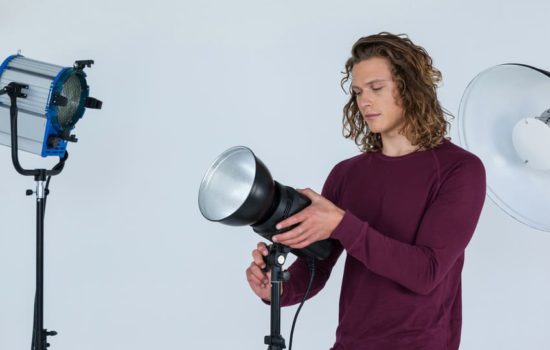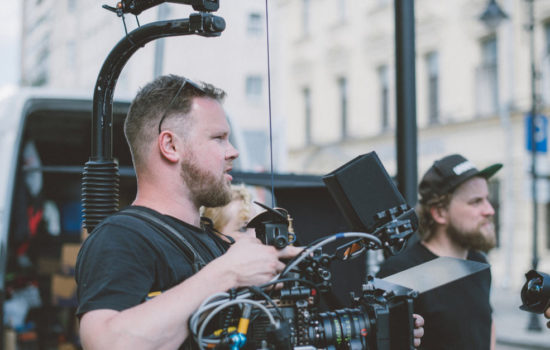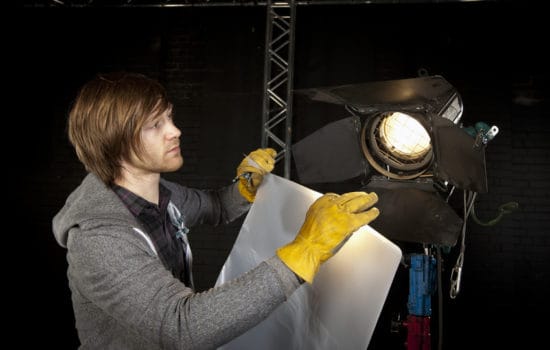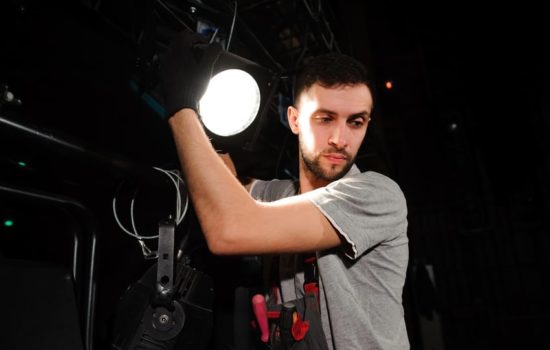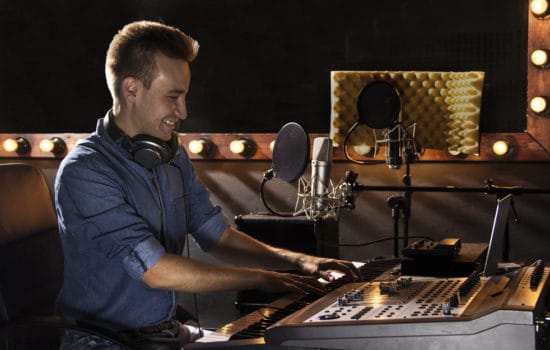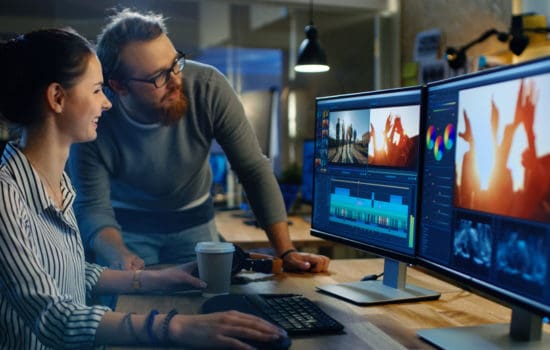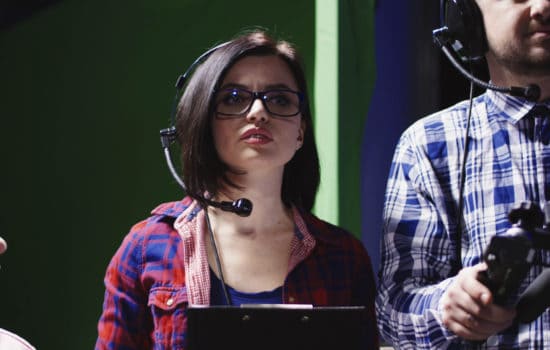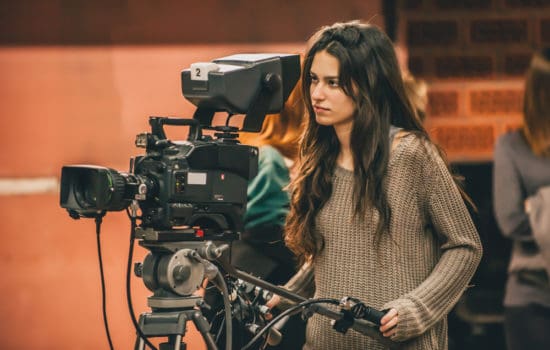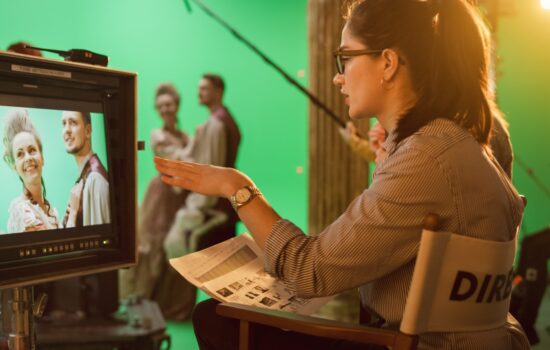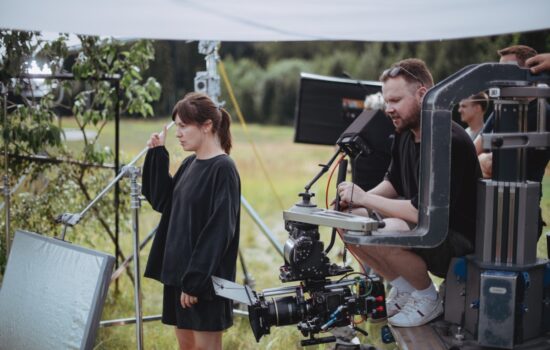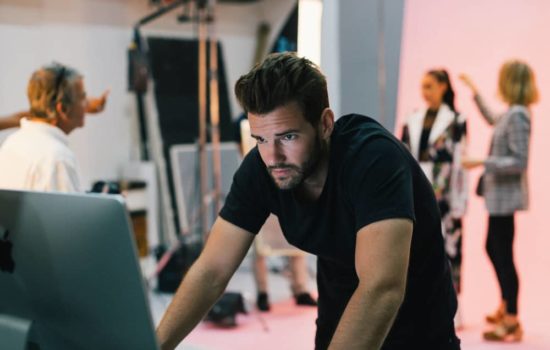Virtual production gives a new meaning to being “on location.” Using game engines, filmmakers can build virtual sets in pre-production and put their actors anywhere from a mountaintop to outer space to a village in the Middle Ages.
8 Ways to Use New Film Technologies
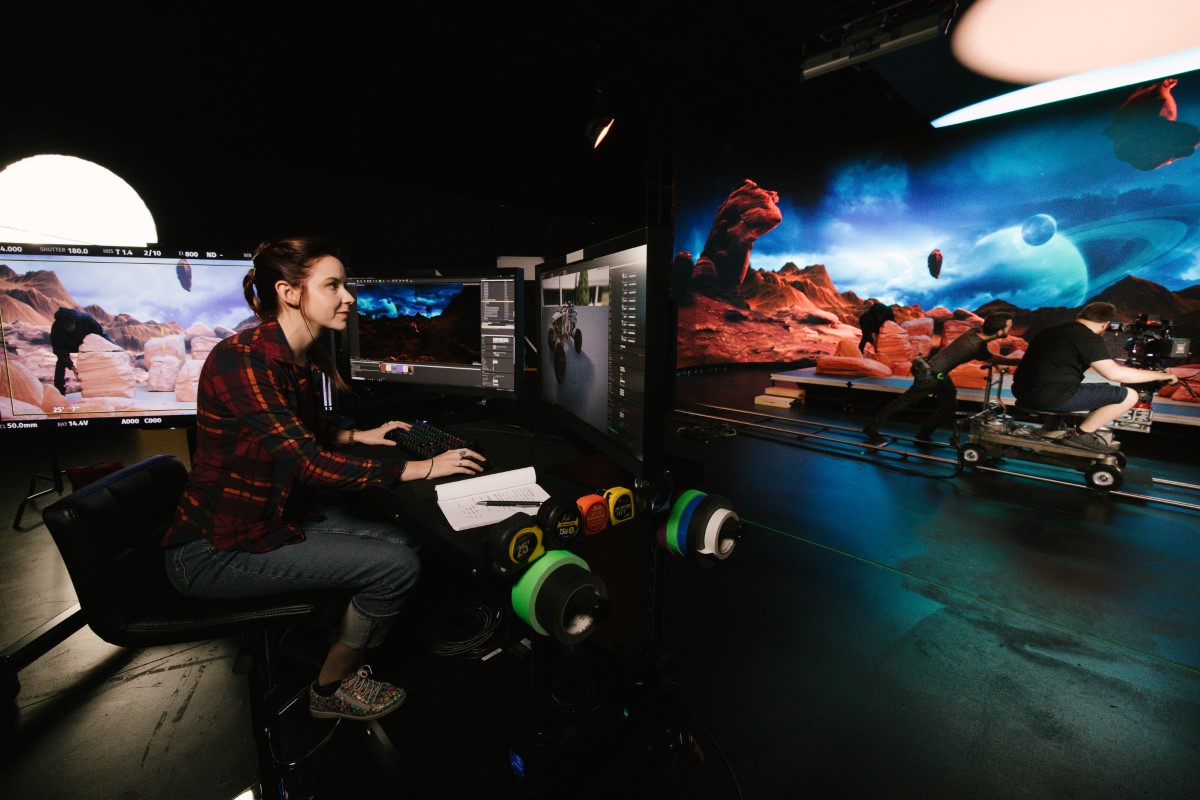
If you’re an aspiring filmmaker who wants to attend film school, you’ll want to find a college that teaches the latest in film technology.
Staying on top of the newest tech is essential for creating fresh experiences for audiences and improving your production process – and virtual production technology is no exception.
Virtual production uses video game engines, like Unreal Engine, to build virtual sets during pre-production. When it’s time to start filming, those sets are displayed on an LED volume wall with built-in lighting. The virtual components are rendered in real-time, creating three-dimensional backdrops that interact with the camera’s movements for a hyper-realistic film set.
Film and commercial studios across the country are building their own virtual studios to keep up with demand, and schools with film degrees like Full Sail University in Winter Park, Florida have installed LED volumes to teach up-and-coming filmmakers about the technology.
Here’s how virtual production and other new film tools are being used in the industry.
1. Building New Worlds
2. Changing Locations in Seconds
Instead of building additional physical sets or traveling to film at different locations, virtual production allows filmmakers to switch sets almost instantly. With a few clicks, a production team can swap out sets on the LED volume wall and place actors in a new environment.
Filmmakers can also change a scene’s lighting or shift a location from morning to night with the volume’s built-in LED lighting.
Hey, what do you think about trying our new Film Career HelperFilm Career Helper really quick? It’s totally free and could help get your career moving fast! Give it a try. It’s totally free and you have nothing to lose.
3. Augmenting On-Location Shots
Shooting on location will always have a place in the film industry, but virtual production can be used to augment on-location shots with mobile LED walls.
4. Enhancing Virtual Sets
Using extended reality (XR) technology in tandem with virtual production allows Directors and Producers to add missing elements to a shot in real-time. A production team can use XR within a game engine to extend a set beyond the LED volume wall, so cameras can pan past the edges for wide shots. Filmmakers can also add elements in front of the Actors, like floating transparent computer screens.
5. Building 3D Models
With volumetric capture, production teams can create 3D models of props, characters, and other elements and turn them into game engine assets for virtual production.
“A lot of times in virtual production, we want a digital replica of props and furnishings, so that we can bounce back and forth between real and virtual,” says Rick Ramsey, the Visual Arts Education Director at Full Sail University. “Volumetric captures are a shortcut to that, so you don’t have to use modeling software to digitally reproduce your couch. You just throw the couch in the volumetric capture studio, take photos of it, and now you have a 3D replica of it.”
6. Stunt Visualization
With virtual production for stunt visualization (or stuntvis), production teams can create 3D models of real-world environments as well as 3D rendered characters in place of stunt performers. Filmmakers can use these components for digital rehearsals, where they test out various camera angles and stunt choreography before performers execute them in the real world.
7. Remote Collaboration
Extended and virtual reality techniques can help filmmakers collaborate remotely in pre-production with members of their team. This can help with location scouting and art direction.
8. Educating New Filmmakers
Finding a film school that keeps tabs on the latest tech can give you an advantage in the entertainment industry. Colleges with film degrees, like Full Sail University, are educating their film students with on-campus investments. Studio V1: Virtual Production is the university’s $3.2 million virtual production studio, complete with a 40-foot wide and 16-foot high LED volume wall with a 16×16-foot retractable ceiling.
Students in the school’s Film program can work with students in the school’s game and animation-focused programs to build virtual sets in Unreal Engine for projects in film courses. Students can also gain virtual production experience on projects from outside clients in Studio V1, as well as through the school’s virtual production internships and work-study programs.
“The results from the virtual production student projects have been amazing,” says Rick. “These are some of the best student films we’ve had come out. And it’s not just because they look great, it’s also because the students can focus on training their actors and rehearsing because they’re not spending time in the middle having to build sets. It’s been huge. There is a real future in this.”


